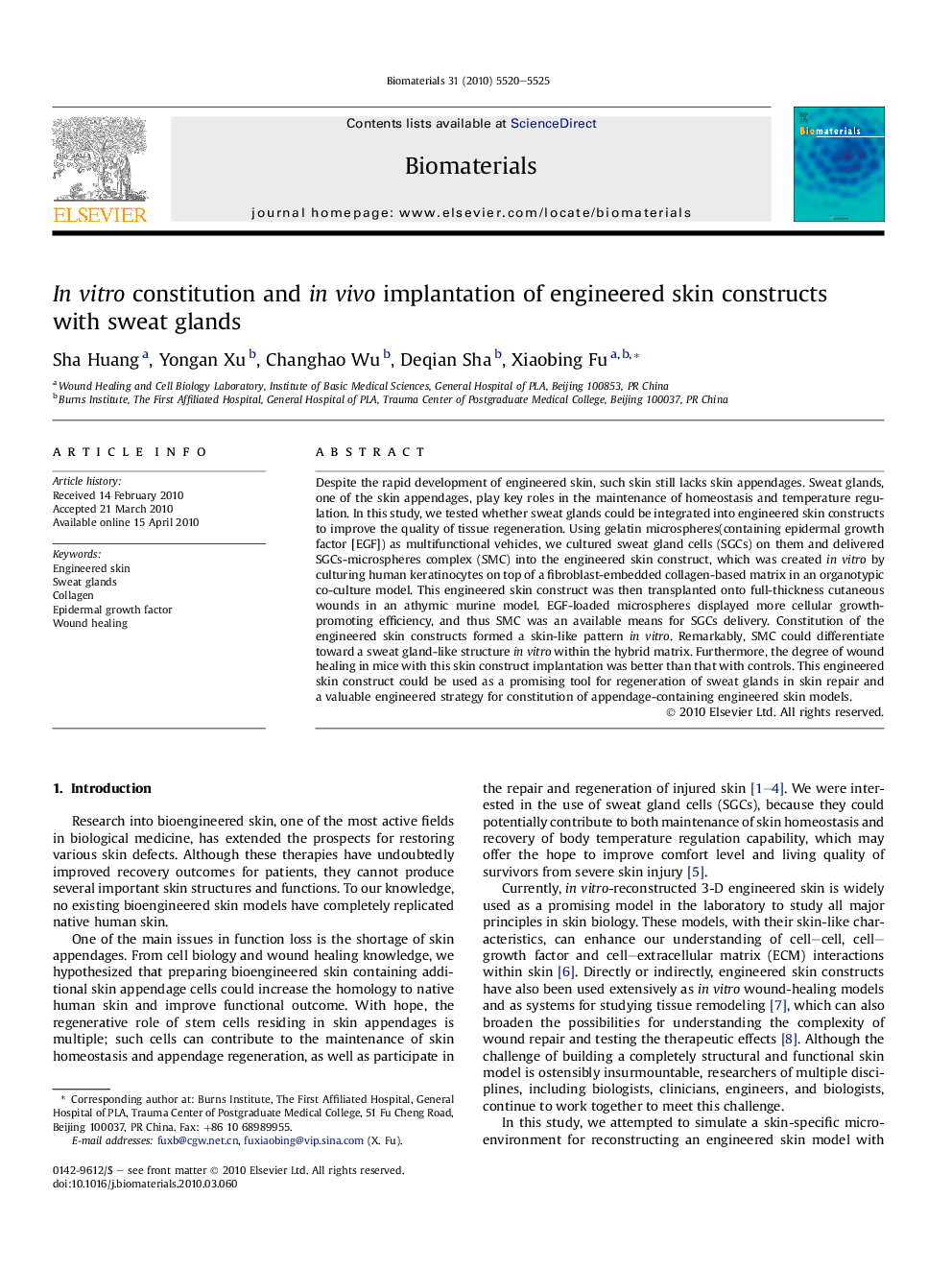| Article ID | Journal | Published Year | Pages | File Type |
|---|---|---|---|---|
| 9497 | Biomaterials | 2010 | 6 Pages |
Despite the rapid development of engineered skin, such skin still lacks skin appendages. Sweat glands, one of the skin appendages, play key roles in the maintenance of homeostasis and temperature regulation. In this study, we tested whether sweat glands could be integrated into engineered skin constructs to improve the quality of tissue regeneration. Using gelatin microspheres(containing epidermal growth factor [EGF]) as multifunctional vehicles, we cultured sweat gland cells (SGCs) on them and delivered SGCs-microspheres complex (SMC) into the engineered skin construct, which was created in vitro by culturing human keratinocytes on top of a fibroblast-embedded collagen-based matrix in an organotypic co-culture model. This engineered skin construct was then transplanted onto full-thickness cutaneous wounds in an athymic murine model. EGF-loaded microspheres displayed more cellular growth-promoting efficiency, and thus SMC was an available means for SGCs delivery. Constitution of the engineered skin constructs formed a skin-like pattern in vitro. Remarkably, SMC could differentiate toward a sweat gland-like structure in vitro within the hybrid matrix. Furthermore, the degree of wound healing in mice with this skin construct implantation was better than that with controls. This engineered skin construct could be used as a promising tool for regeneration of sweat glands in skin repair and a valuable engineered strategy for constitution of appendage-containing engineered skin models.
